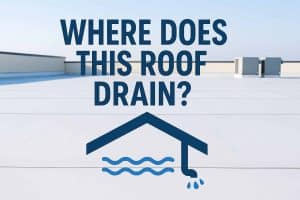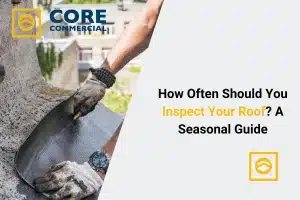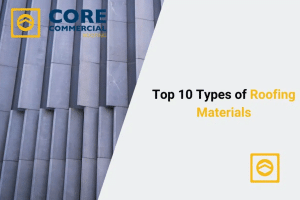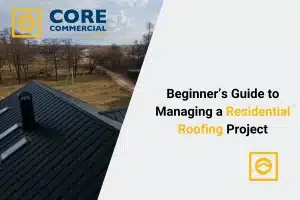Commercial roofs in Texas face some of the harshest conditions in the country. Long summers with high heat, sudden storms, and heavy rain can quickly wear down roofing materials. For property owners and facility managers, this means higher risks of leaks, water damage, and costly repairs if action is delayed. Thankfully, several effective roof restoration solutions can add years of life to aging structures.
The most reliable option is applying an elastomeric roof coating, which creates a flexible and weather-resistant barrier that shields buildings from the elements. But coatings are just one of several powerful strategies worth considering. In this article, we’ll explore eight proven methods that not only extend the lifespan of commercial roofs but also help businesses save money and avoid disruptions. By the end, you’ll have a clear understanding of which solutions may be best for keeping your building safe, strong, and efficient for years to come.
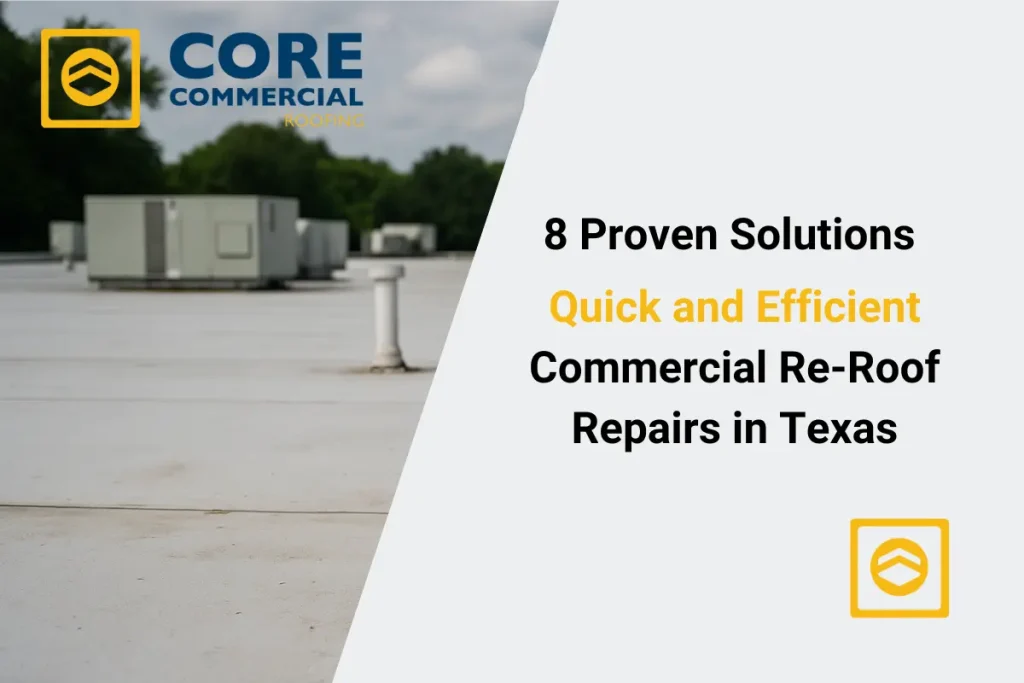
Table of Contents
Why Roof Restoration Matters for Texas Commercial Buildings
Texas is known for its intense weather shifts. From blazing summer heatwaves to sudden hailstorms, roofing systems are constantly under stress. Over time, even the most durable commercial roofs begin to break down. Cracks, ponding water, and worn seams create vulnerabilities that can let moisture inside.
Restoration offers an affordable alternative to full replacement. Instead of tearing off old materials, restoration focuses on strengthening and upgrading what already exists. This approach saves time, reduces waste, and lowers costs while still delivering long-lasting protection. For building owners and managers, restoration means less disruption to tenants and operations.
Most importantly, restoration solutions can add ten or more years of performance to a roof. That kind of extension is invaluable for aging commercial buildings, especially when budgets are tight and energy efficiency is a top priority.
1. Elastomeric Roof Coatings
Elastomeric coatings are one of the most popular roof restoration solutions for good reason. These coatings form a seamless, waterproof barrier that stretches and contracts with temperature changes. Texas buildings benefit greatly from this flexibility since roof surfaces expand under the sun and contract at night.
By sealing cracks and covering vulnerable areas, elastomeric coatings stop leaks before they start. They also provide excellent UV protection, reducing heat absorption and helping to lower energy bills. In many cases, a high-quality coating can add a decade of life to a commercial roof without the expense of replacement.
For property managers seeking a balance of affordability and performance, coatings are often the first choice.
2. Infrared Moisture Scans and Targeted Repairs
Before any major restoration, it’s important to know the true condition of the roof. Infrared moisture scans detect hidden water trapped beneath roofing membranes. This technology identifies problem areas that may not be visible.
Once leaks or wet insulation are located, contractors can perform targeted repairs rather than replacing large sections unnecessarily. This precision saves money and ensures that restoration efforts are effective.

In Texas, where sudden storms can cause localized damage, combining scans with selective repairs is a smart strategy. It allows building owners to address weak points quickly while preparing the roof for larger restoration treatments like coatings or overlays.
3. Single-Ply Membrane Overlays
When existing materials are too worn for coatings but still structurally sound, a single-ply membrane overlay can be the answer. Options like TPO or PVC membranes are rolled out over the old surface and secured, creating a brand-new protective layer.
Overlays are highly resistant to UV damage, chemicals, and ponding water. They also come in reflective white colors, which help reduce rooftop heat absorption. In hot Texas climates, this cooling effect translates into lower utility costs for air conditioning.
By installing an overlay, building owners can often delay full roof replacement for many years while enjoying modern performance features.
4. Spray Polyurethane Foam (SPF) Roofing
Spray polyurethane foam is another advanced restoration method. It is applied directly onto the roof as a liquid, where it expands into a solid, insulating layer. SPF roofing seals seams, fills gaps, and creates a continuous barrier against leaks.
One of its biggest advantages is energy efficiency. The foam’s high R-value provides superior insulation, which helps keep indoor temperatures stable during Texas summers. Over time, energy savings often offset the installation cost.
SPF also reinforces the structure, adding strength without heavy materials. With regular maintenance and re-coating, an SPF system can last decades, making it an excellent long-term investment.
5. Restoring Metal Roofs with Sealants and Coatings
Metal roofs are common on Texas commercial buildings because of their durability, but even they are not immune to aging. Over time, seams can separate, fasteners may loosen, and rust can develop.
Restoration focuses on treating rust spots, tightening connections, and applying protective coatings. Silicone or elastomeric coatings are especially effective at sealing seams and preventing water intrusion.
By restoring rather than replacing metal panels, businesses avoid high costs and keep their structures protected from harsh weather. A restored metal roof can remain watertight and efficient for years with proper care.
6. Improved Drainage and Gutter Systems
Even the best roofing materials can fail if water is allowed to pool on the surface. Ponding water is a common issue in Texas, especially on flat commercial roofs. Improving drainage is a vital restoration step.
This can involve installing tapered insulation to redirect water, repairing clogged scuppers, or upgrading gutter systems. Enhanced drainage prevents leaks, reduces structural strain, and helps coatings or overlays last longer.
While drainage improvements may seem simple, they play a critical role in extending roof life and preventing expensive water damage inside the building.
7. Energy-Efficient Reflective Roofing
In Texas, reducing heat absorption is one of the smartest strategies for roof restoration. Reflective roofing materials, often called “cool roofs,” bounce sunlight away instead of trapping it.
Restoring a roof with reflective coatings or membranes not only lowers interior temperatures but also reduces strain on HVAC systems. Businesses enjoy lower cooling costs while employees and tenants benefit from more comfortable conditions.
The environmental benefit is another plus. Reflective roofing helps reduce the urban heat island effect, making it a sustainable choice for commercial property owners committed to greener practices.
8. Preventive Maintenance Programs
The final and often overlooked solution is preventive maintenance. Even after a major restoration, roofs require regular inspections and minor upkeep. A maintenance program includes cleaning debris, sealing small cracks, and reapplying coatings when necessary.
This proactive approach ensures that minor issues don’t become major expenses. In Texas, where unpredictable weather can strike at any time, routine maintenance provides peace of mind.
Investing in consistent care not only extends the lifespan of restoration work but also protects the building’s overall value.
Long-Term Benefits of Roof Restoration Solutions
Choosing the right restoration strategy does more than prevent leaks. For commercial property owners, the long-term benefits are significant:
- Cost savings compared to full replacement
- Extended roof’s lifespan by 10 to 15 years or more
- Improved energy efficiency and reduced utility bills
- Minimal disruption to building operations
- Environmental benefits from reduced waste and better insulation
These advantages highlight why restoration is a smart investment for aging commercial roofs across Texas. By selecting the right solutions, businesses can protect their property, improve comfort, and save money in the process.
Conclusion
Aging commercial roofs don’t have to mean expensive replacements or constant repairs. With proven roof restoration solutions, property owners in Texas can breathe new life into their buildings while keeping costs under control. From elastomeric coatings to spray foam systems, drainage upgrades, and preventive maintenance, each method provides unique benefits that strengthen and protect commercial structures.
The key is to take action before small issues turn into major problems. By restoring rather than replacing, businesses can enjoy extended roof performance, lower energy costs, and greater peace of mind. Whether your building is dealing with leaks, heat stress, or general wear and tear, there is a solution that can bring lasting results.
Roof restoration is not just about fixing problems today—it’s about creating a stronger, safer, and more efficient building for the future.
FAQs
How much does commercial roof repair cost per square foot in Texas?
Where can I get 24/7 emergency commercial roof repair in Dallas?
Dallas–Fort Worth companies like CSI Roofers run 24‑hour dispatch teams that can arrive the same day, stop leaks, and install temporary covers so your business stays open. Search “24/7 emergency commercial roof repair Dallas” to find crews with real‑time storm tracking and fast response vans.


